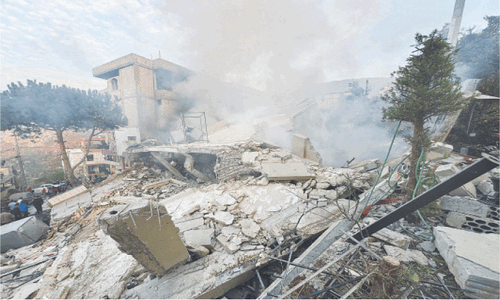ARTIFICIAL intelligence has the potential to revolutionise our response to the concerns of climate change and climatic disasters. The convergence of AI and climate action holds promise not only for enhancing our ability to adapt to a changing environment but also for developing sustainable solutions that may help mitigate the factors behind climate change.
Climate change is driven by anthropogenic activities, causing greenhouse gas emissions and global warming, and posing severe risks such as rising sea levels, ecosystem disruption, the endangering of species, and altered ocean currents. Frequent climatic events such as hurricanes, droughts, floods and wildfires cause biodiversity loss and pose health risks. From precision agriculture and renewable energy optimisation to disaster prediction and response, AI is driving innovation that can reshape our approach to climate-related issues.
In 2023, a surge in climate change-induced disasters occurred worldwide. Hurricane Idalia, originating in the Caribbean in 2023, attained Category 3 status and left widespread destruction in Perry, Florida in its wake.
Closer to home, in June this year, Cyclone Biparjoy threatened Pakistan’s coastline and severely impacted Gujarat in India, necessitating evacuations and causing casualties. Severe floods struck Greece, Türkiye, and Bulgaria in September 2023 with heavy rains causing flooding and landslides. Rwanda also experienced floods and landslides in May 2023.
According to the US National Oceanic and Atmospheric Administration, over the past two decades, rising temperatures, prolonged droughts and arid conditions have elevated wildfire risks.
Climate change amplifies interconnected factors such as temperature and humidity in vegetated areas, triggering dangerous wildfires. In July 2023, Greece faced devastating wildfires, the US battled wildfires in California, and Canada struggled with over 900 active fires, 599 of them “out of control”. Also, in Southeast Asia, Myanmar, Thailand, Laos and Vietnam experienced wildfires. Chile’s Megadrought culminated in a catastrophic wildfire earlier this year.
Weather forecasts must use AI.
AI plays a crucial role in providing weather forecasts for anticipating natural disasters accurately. Conventional forecasting relies on intricate mathematical models, which may not be able to predict extreme events. AI’s foremost contribution lies in providing early warning mechanisms and post-disaster recovery efforts. Through the analysis of extensive data from sources like satellite imagery, weather stations, and social media, AI algorithms can discern patterns and trends indicative of impending disasters.
For instance, AI-driven systems can detect hurricane formation and factors that could lead to wildfire, such as smoke plumes, rapidly changing heat signatures and the appearance of hotspots in vegetated areas in satellite images, enabling timely warnings and evacuations.
The US utilises AI to enhance weather predictions, early warnings, flood monitoring, disaster-response coordination, infrastructure assessment and long-term climate modelling, which improves resilience and disaster management. Japan has introduced an emergency announcement system, utilising automated drones to facilitate disaster evacuations.
These drones operate on a dedicated private wireless network that remains functional during emergencies. They are equipped with infrared cameras to capture real-time images of disaster-affected areas and transmit them to disaster-response centres to urge people to evacuate. This technology enhances the speed and security of remote damage assessment, thereby improving disaster response efficiency.
Pakistan needs to integrate AI into the operations of its meteorological departments due to the severe impact of climate change. The country faces challenges such as reduced agricultural productivity, irregular water supplies, coastal erosion and increased extreme weather events, making AI-based climate disaster management crucial.
Pakistan ranks among the top 10 countries which are most affected by climate change. Severe floods in 2022, with rainfall three times higher than the national average, had caused damage to the tune of $30 billion, with more than 1,200 fatalities.
There are no AI-based measures mentioned in the National Artificial Intelligence Policy to address climate disaster mitigation. Countries, such as the US, which have invested in AI for disaster response, have witnessed notable improvements in preparedness and rapid response time, underlining the potential benefits of a dedicated climate-disaster-mitigation AI policy. Pakistan should therefore consider incorporating climate-disaster-mitigation AI technology measures into the NAIP to effectively cope with the impacts of climate change.
The writer is a research assistant at the Centre for International Strategic Studies Sindh.
Published in Dawn, December 28th, 2023


































